What’s the first thing that comes to mind when you think of Australia? Before visiting, we pictured kangaroos, koalas, stunning beaches, and, of course, the idea that almost everything here can kill you. The truth is, all of that exists—but it’s only a tiny part of what Australia truly is.
Because let’s face it: Australia is enormous. Just to give you an idea, Queensland alone is four times the size of Spain. That’s why, on our first trip to Australia, we chose to travel along the Queensland Pacific Coast Way, a route that follows the east coast of Queensland and took us from Brisbane to Cairns.
Why did we choose this route? Because of one-of-a-kind destinations like the Great Barrier Reef, Fraser Island, the world’s largest sand island; and Daintree Rainforest, the oldest rainforest on Earth. Because of unparalleled experiences, like swimming with whales in Hervey Bay, cruising around the Whitsunday Islands, or skydiving with a beach landing. Because of the countless waterfalls, natural pools, and national parks scattered along the way.
And this is just the beginning. Keep reading to discover everything the Queensland Pacific Coast Way has to offer!
Before setting off on the incredible adventure of traveling the Queensland Pacific Coast Way from Brisbane to Cairns, here’s what you need to know:
The route stretches 1,698 kilometers (not including detours), roughly the same distance as from Seville to Paris.
The road follows the Queensland coastline, passing through charming towns and picturesque villages. You’ll see the best of Queensland’s east coast, with wildlife parks and the Great Barrier Reef in view for about two-thirds of the journey.
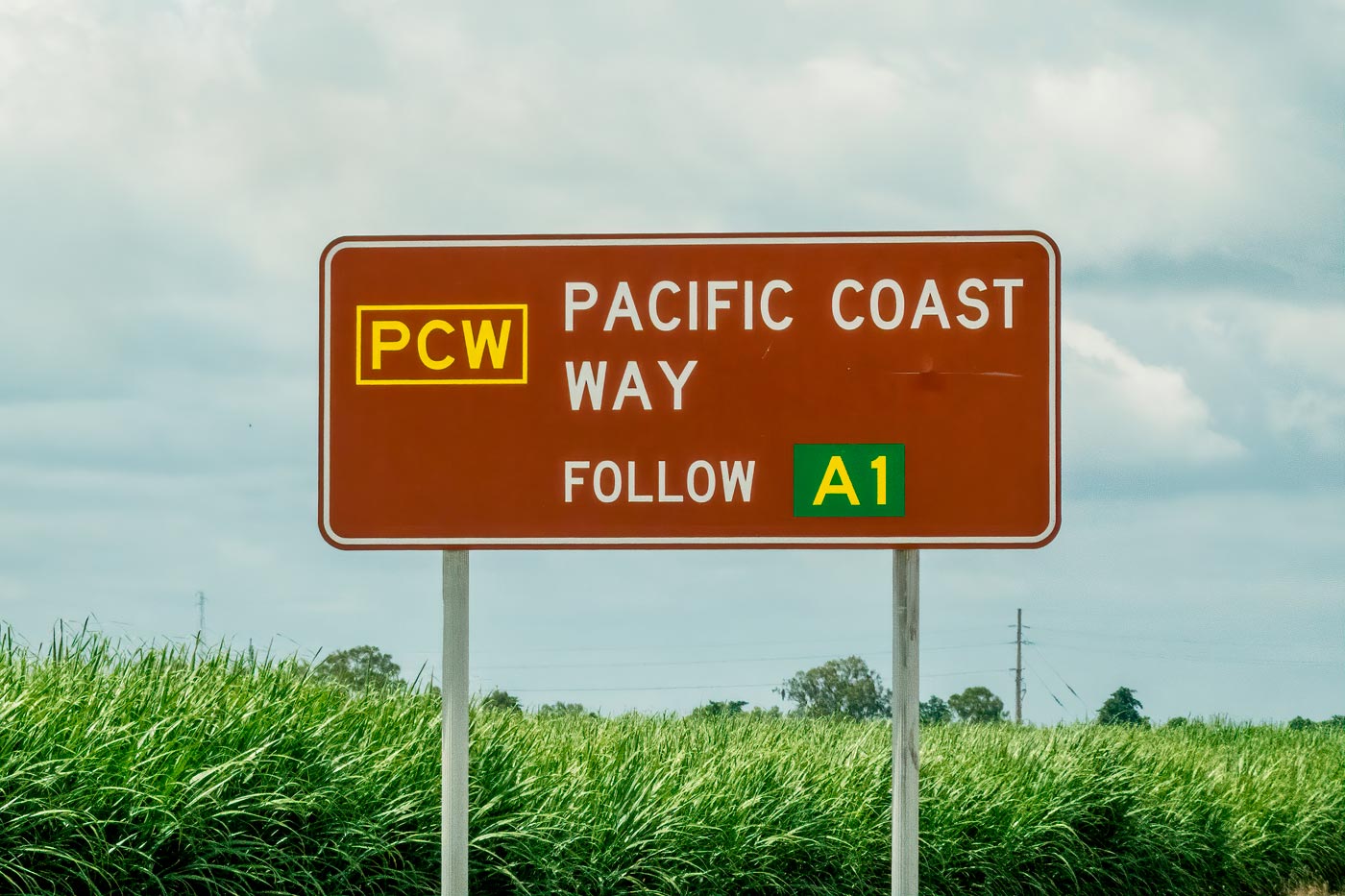
If you’re in a rush, you could complete the trip in about 8 days and see the essentials. But if you’re like us and prefer a slow-paced adventure, you could easily spend over 3 months exploring, and still not see everything!
Before choosing the best time to visit, there are two key factors to consider: First, the climate; since the route covers such a vast distance, the weather varies significantly along the way. Second, the jellyfish season; certain times of the year make swimming in the ocean dangerous due to deadly jellyfish.
North Queensland (near Cairns) has a purely tropical climate, with two distinct seasons: the rainy season and the dry season. In contrast, South Queensland (near Brisbane) has a subtropical climate, characterized by warm summers and cool winters.
The southern winter coincides with the northern dry season (June to August). During this time, the weather near Cairns is dry and sunny. In contrast, in Brisbane, daytime temperatures are mild, while nights can be quite cool.
The southern summer coincides with the northern rainy season (December to February). During this period, Cairns experiences humid, rainy, and stiflingly hot weather. Meanwhile, Brisbane enjoys high temperatures with little rainfall.
Jellyfish season is a crucial factor to consider if you plan to do any sea activities. In certain areas along the Australian coast (unfortunately, including the Queensland Pacific Coast Way), there are two species of jellyfish that can be fatal if stung: the Irukandji jellyfish and the Box jellyfish.
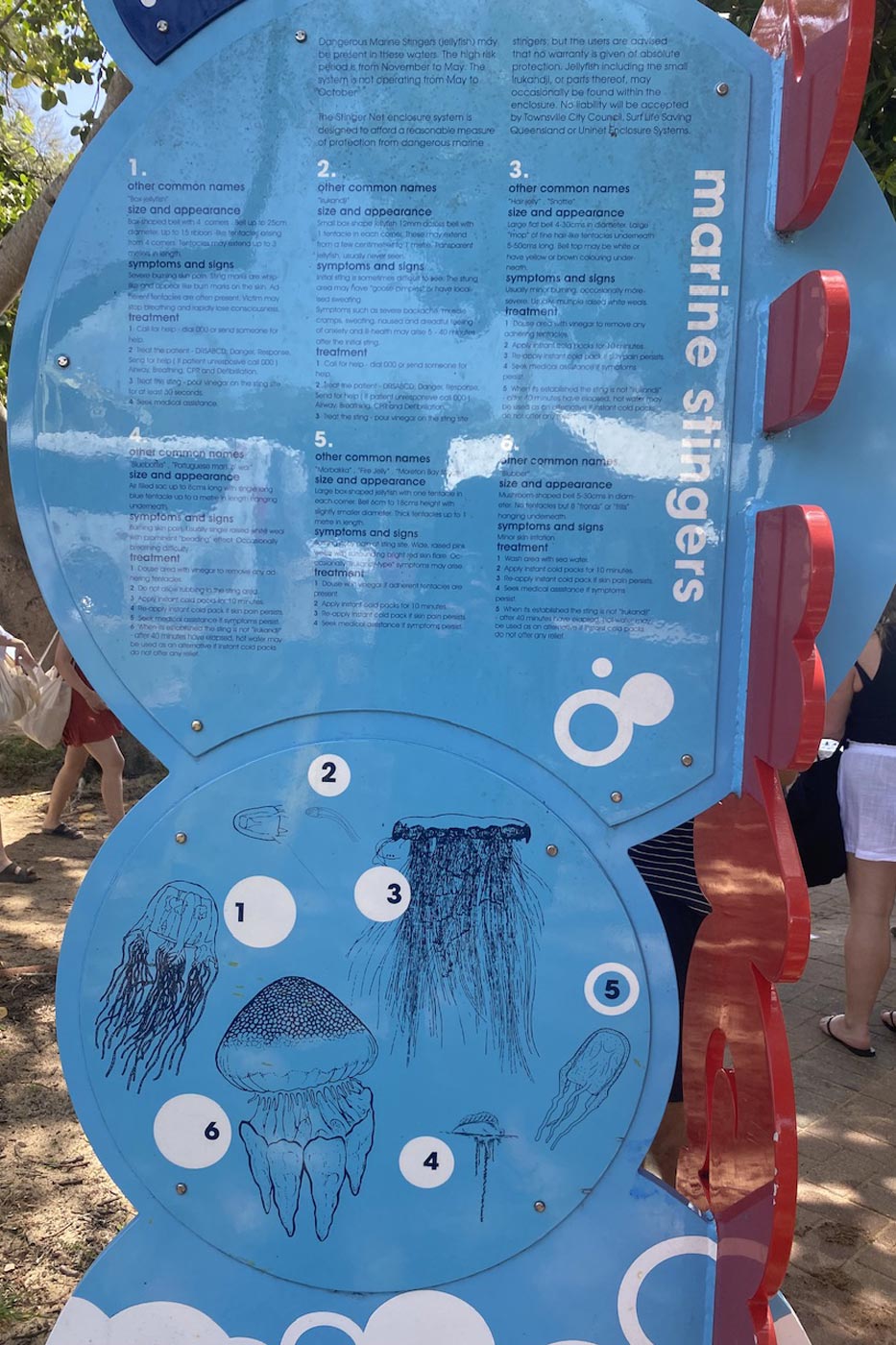
These jellyfish are significantly more abundant during the warmer months of the year, from October to May, which is considered jellyfish season. Swimming during these months is not recommended unless you wear a specially designed stinger suit to prevent jellyfish stings.
Considering all the factors above, the best months to walk the Queensland Pacific Coast Way are—drum roll… June to September.
And why? Because these months avoid both the tropical rains in Cairns and the intense heat in Brisbane. Additionally, during this time, it is safe to swim in the ocean—at least in terms of jellyfish (but don’t forget that sharks and crocodiles, among other creatures, are also present).
It is important to mention that in September, the water off Queensland’s east coast may be slightly cloudy due to the “Mango Winds,” making snorkeling less spectacular. Similarly, the water off Brisbane’s coast can be quite cold if you’re not wearing a wetsuit.
We know that the subject of visas can be somewhat confusing, especially for India, where obtaining one is an essential requirement for entry. In the article on how to obtain an Australian visa step by step (coming soon) you have information on how to apply for one online for up to 5 years.
It goes without saying how important it is to travel to Malaysia with a good insurance. We were the first ones to offer the famous 5% discount on IATI Insurance, but you also have it available with Heymondo Travel Insurance.
Follow the links below to get a discount on their website:
You can reach Brisbane or Cairns via international flights to either Brisbane International Airport or Cairns International Airport. There are no direct flights from Spain, so you will have to make one or more stopovers.
Be prepared for long flights. Remember, you’re traveling to the other side of the world. For example, the fastest route from Madrid to Brisbane takes 15 hours with a stopover in Dubai.
While you could technically travel by boat, we’ll leave that method for blogs dedicated to sailing.
You can reach either city with direct flights from major Australian hubs such as Melbourne, Sydney, or Perth. For example, Sydney to Brisbane takes a 1.5-hour flight, and Perth to Brisbane or Cairns takes a 4.5-hour flight.
If you prefer to travel by car, it’s a long journey unless you make stops along the way. However, the roads connecting major cities are well-maintained, making the journey along the Queensland Pacific Coast Way feasible. Sydney to Brisbane is just under 10 hours by car, and Perth to Brisbane takes 3 days (or 45 hours) of driving.
If you’re looking for public transport, buses and trains are options: Bus or train from Sydney to Brisbane takes around 14 hours, or from Melbourne to Brisbane is around 29 hours. If you’re carrying luggage, we don’t recommend the bus from Perth to Brisbane, it takes over 80 hours with multiple stops. A better alternative, taking around 40 hours, is the train from Perth to Brisbane.
Nowadays, finding hotels, guesthouses, or restaurants with free Wi-Fi is pretty common. However, there are still those who prefer (or need) to stay connected at all times.
That’s why we’ll show you how to get an eSIM Australia card with internet— now also available with unlimited data.
Brisbane, the capital of Queensland, is the perfect starting point for exploring the Queensland Pacific Coast Way. Here, you’ll find plenty of options for renting a campervan or car and stocking up on supplies before hitting the road.
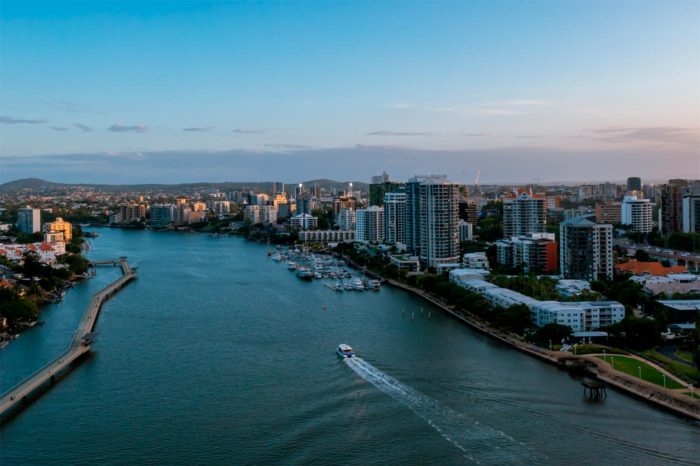
Brisbane is a vibrant, multicultural city with plenty to see and do. Some highlights include: the Lone Pine Koala Sanctuary, the colorful Brisbane Botanic Gardens, or, why not, Moreton Island. Start enjoying the islands of the Queensland Pacific Coast Way.
Brisbane is also very close to Surfers Paradise on the Gold Coast, a place that promises a lot just by its name!
The name Sunshine Coast says it all—beaches, ocean, and surfing. As the next stop after Brisbane on the Queensland Pacific Coast Way, it’s one of the best places for surfing and relaxing on long stretches of white sandy beaches.
Just a short drive from the Sunshine Coast, you’ll find Noosa Heads, a charming coastal town. And it’s not famous for nothing, just take a walk along the Coastal Walkway, and you’ll understand why Noosa Heads is such a popular destination.
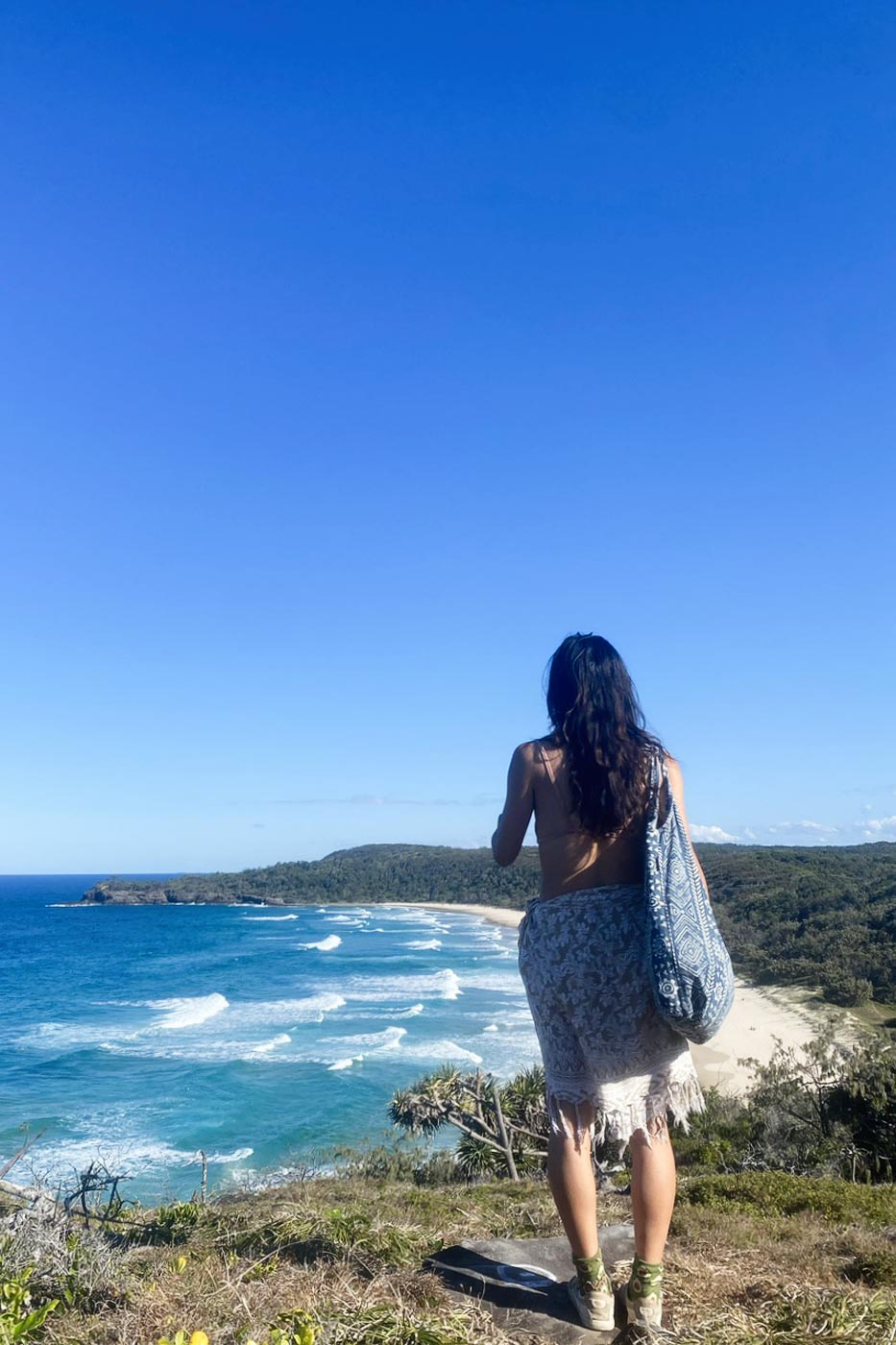
However, if you’re not a fan of sand getting everywhere (I personally hate when it does) and the crowds of tourists, you can take a scenic drive from the Sunshine Coast through part of the Glass House Mountains. This route will immerse you in Australia’s lush subtropical rainforests.
Fraser Island is the world’s largest sand island, featuring a “highway” on its beach, the famous 75 Mile Beach. But that’s just the beginning!
On Fraser Island, you can: camp on the beach with Dingoes lurking nearby, visit the crystal-clear Lake McKenzie, discover the iconic SS Maheno shipwreck, float down Eli Creek.
There’s so much to see and do! Without a doubt, Fraser Island is a one-of-a-kind destination—on the Queensland Pacific Coast Way, in Australia, and on Earth.
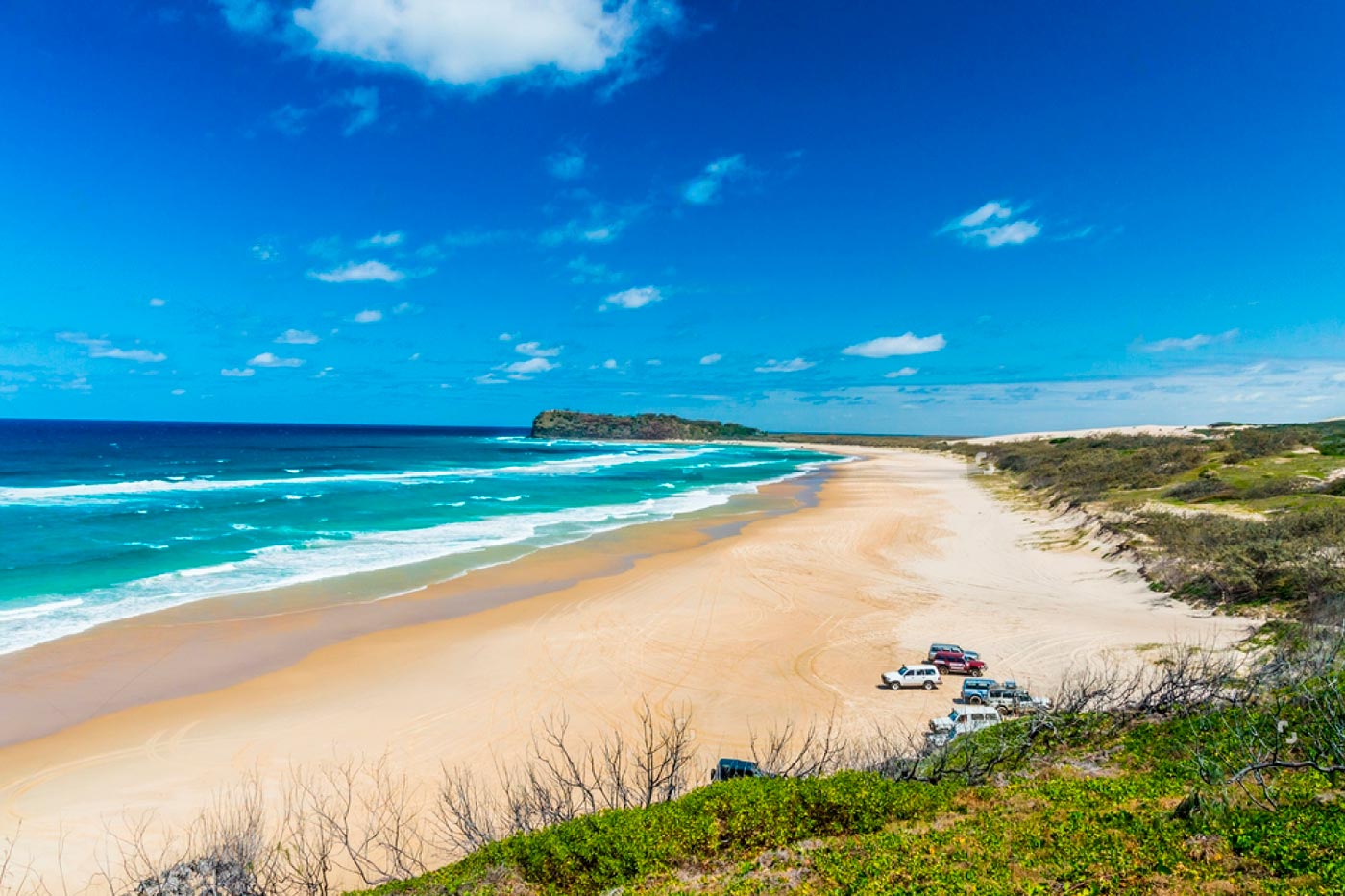
You can explore Fraser Island by 4×4, whether you own one or rent one. But be careful—you might get stuck in the sand like we did! If driving isn’t your thing, no worries! Fraser Island can also be explored through guided tours, cruises, and even hiking trails.
What makes Hervey Bay so special that it deserves a spot on the Queensland Pacific Coast Way? Well, its coast is a “playground” for massive humpback whales.
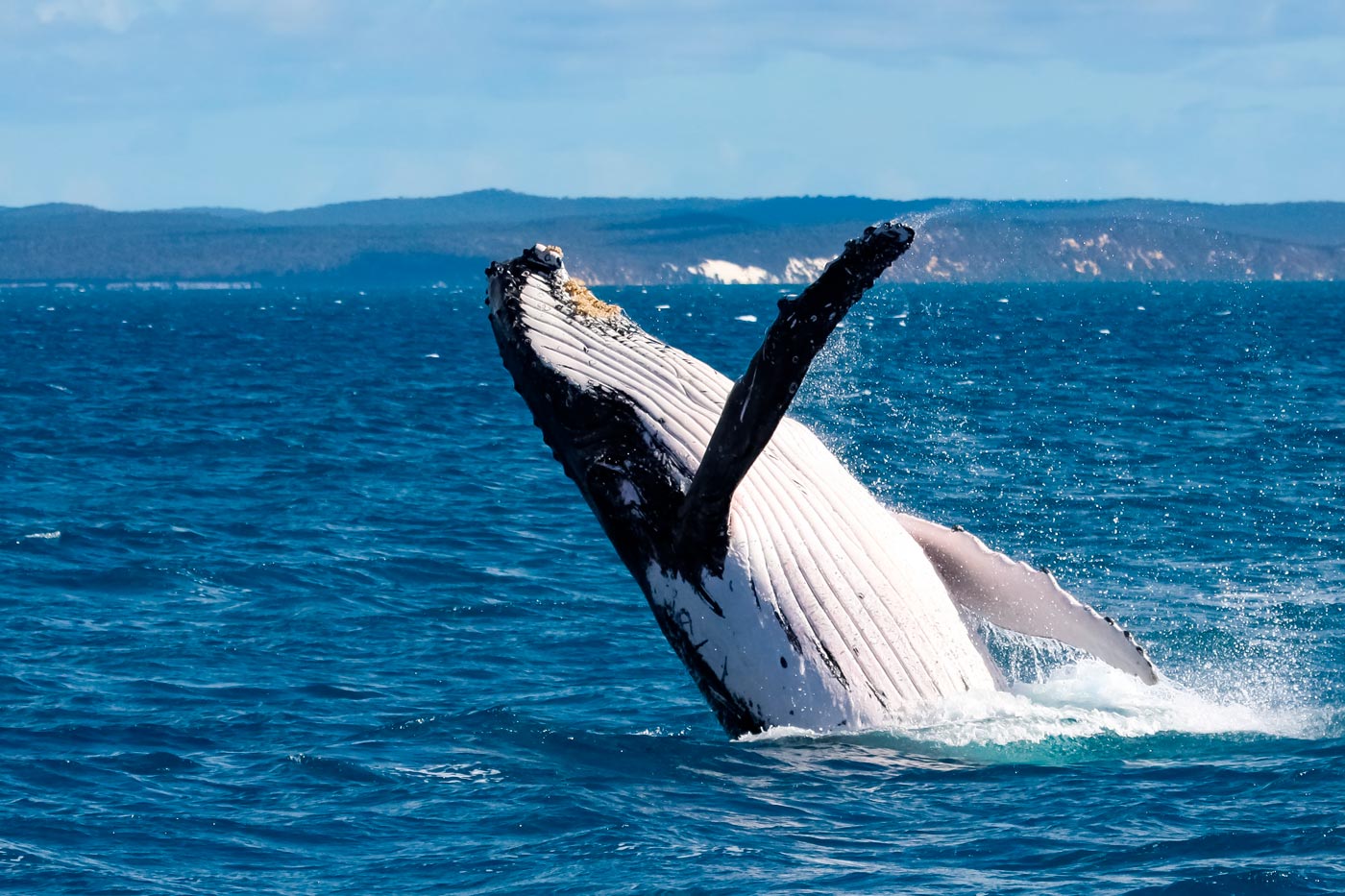
Unlike other spots along the Queensland coast, where you might catch a glimpse of passing whales (like on the Gold Coast or Noosa Heads), Hervey Bay is where whales stop to rest and play. And what does that mean for you? It means these incredible creatures will swim right up to your boat, just a couple of meters away! And if that’s not exciting enough… here, you can even swim with them!
Would you dare take a dip?
Have you ever heard of Bundaberg Rum? No? Yes? Bundaberg is home to the famous Bundaberg Rum, a beloved drink in Australian bars. It’s also where you’ll first see the sugarcane plantations that will accompany you throughout much of the Queensland Pacific Coast Way.
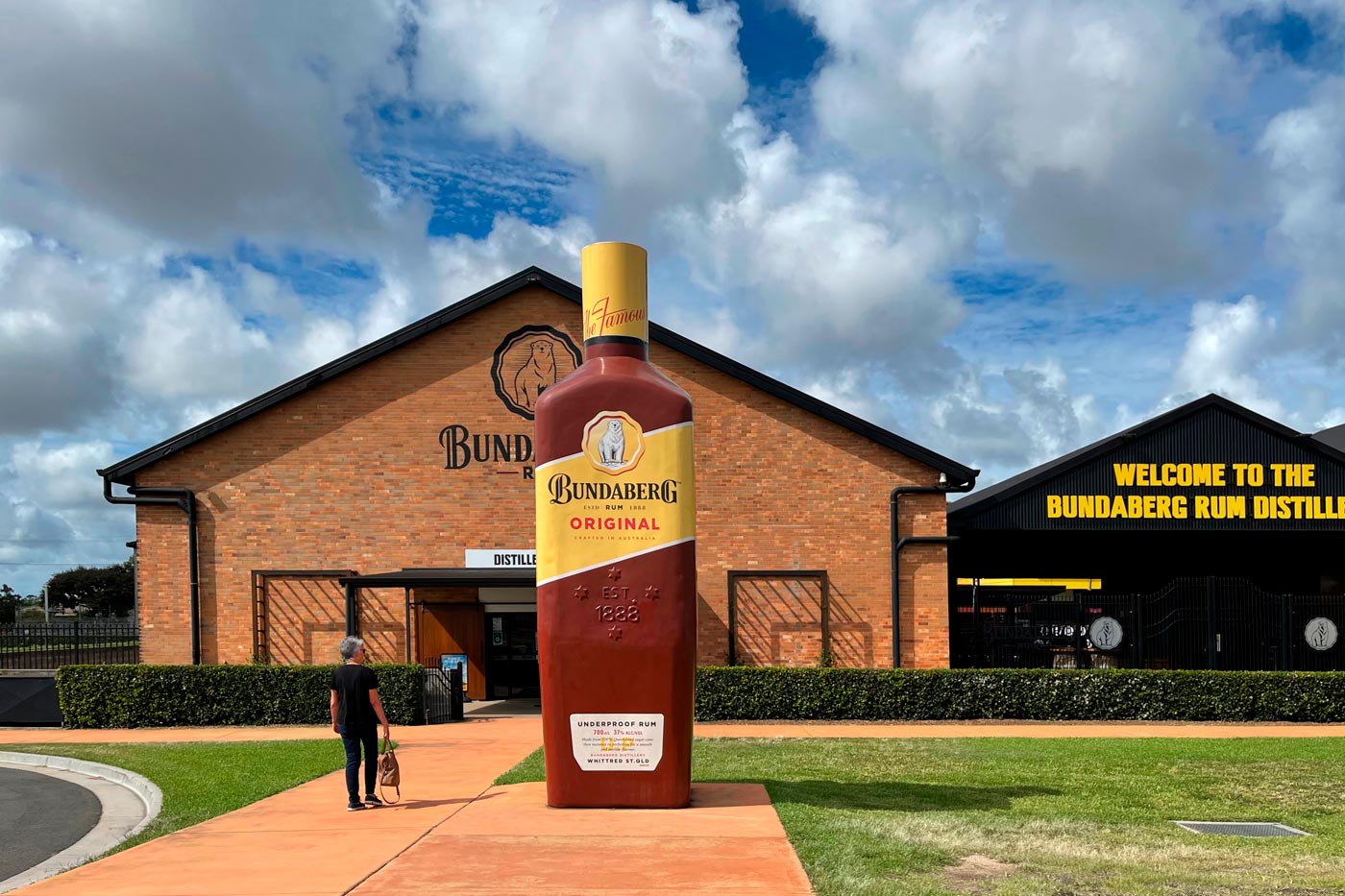
But wait, there’s more! Bundaberg is also home to two fascinating sea turtle species: the loggerhead turtle (long-necked turtle) and the green sea turtle. Every year, these sea turtles return to Bundaberg’s beaches to lay hundreds of eggs.
If you happen to visit during hatching season (January to March), you’ll witness a truly magical sight—thousands of baby turtles making their way to the ocean. What a spectacle!
On a peculiar peninsula along Queensland’s east coast, the intrepid Captain Cook landed in Australia for the second time in May 1770. And more than 250 years later, this very spot has become a stunning coastal town. I think you already know which town we’re talking about…
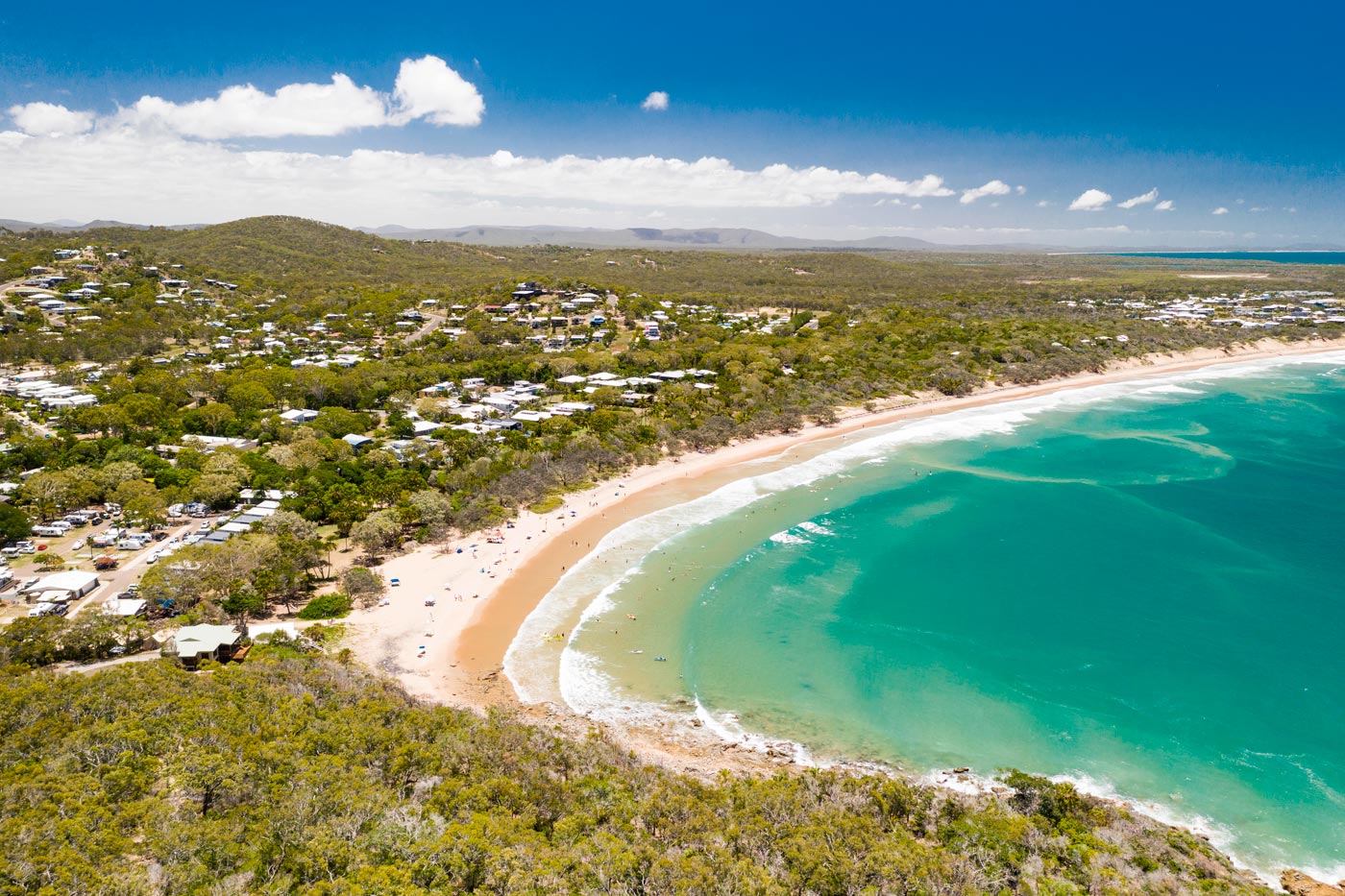
But enough of the history lesson. Agnes Water & Town of 1770 is known for its amazing beach activities, including surfing, kayaking, stand-up paddleboarding (SUP)… But that’s not all! This town is also the gateway to Musgrave Island, where you can dive into an underwater world filled with majestic manta rays.
Rockhampton is a key stop along the Queensland Pacific Coast Way, famous for its high-quality beef production. It’s not called “The Beef Capital of Australia” for nothing! If you’re a meat lover, this is your ultimate foodie destination.
But Rockhampton isn’t just about steaks, it also serves as a great base for exploring the surrounding areas. Keep reading… the best is yet to come!
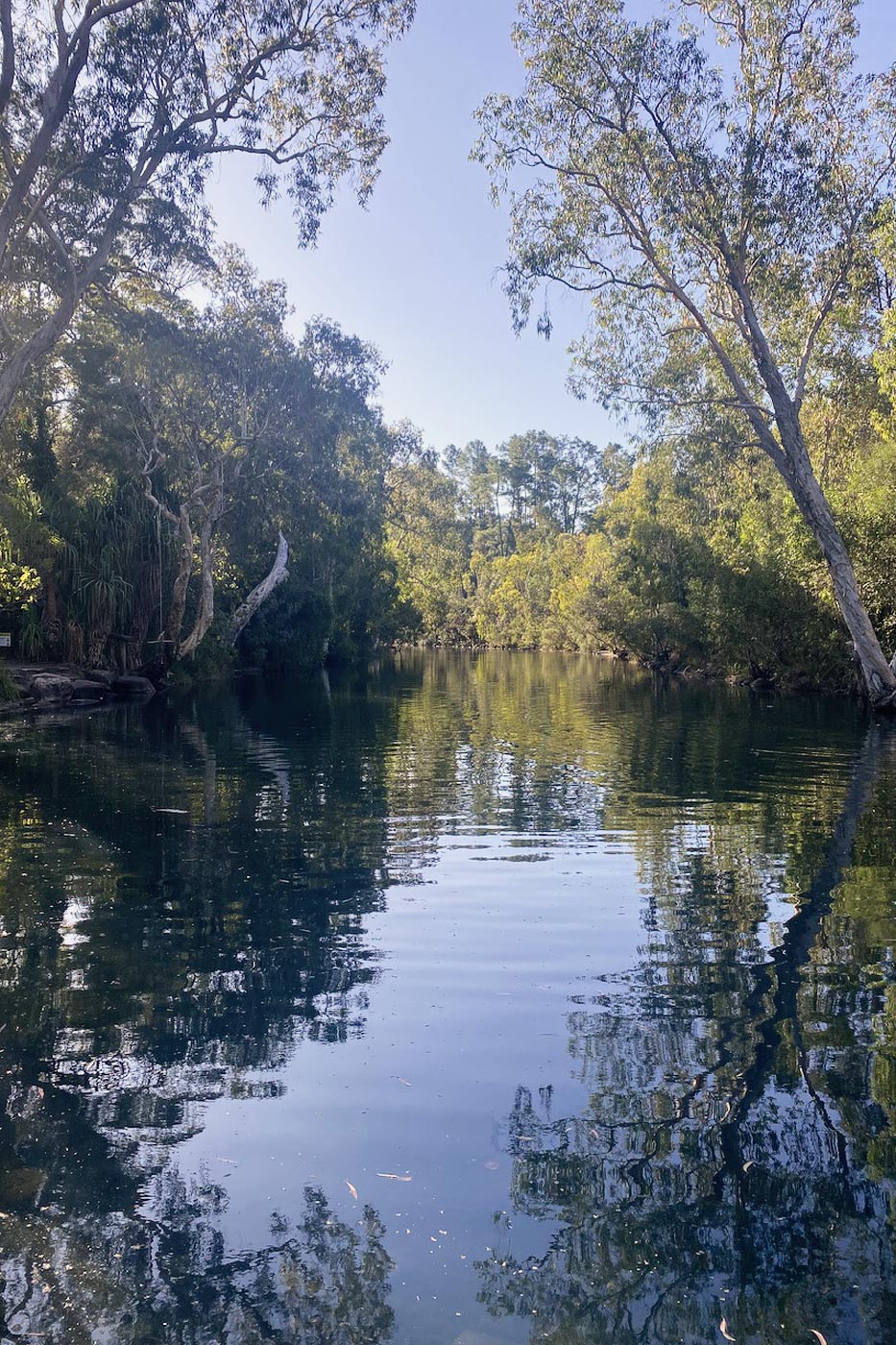
As I mentioned, there is so much to see and do around Rockhampton! You can visit the natural pools formed between giant boulders in Blackdown Tableland National Park, explore the coastal town of Yeppoon, packed with attractions, or experience the tropical atmosphere of Great Keppel Island. And let’s not forget Byfield National Park! These are just a few highlights to get you started, there’s much more to discover.
Mackay itself is a typical city among those along the Queensland Pacific Coast Way. But what makes it special isn’t its buildings, it’s its surroundings.
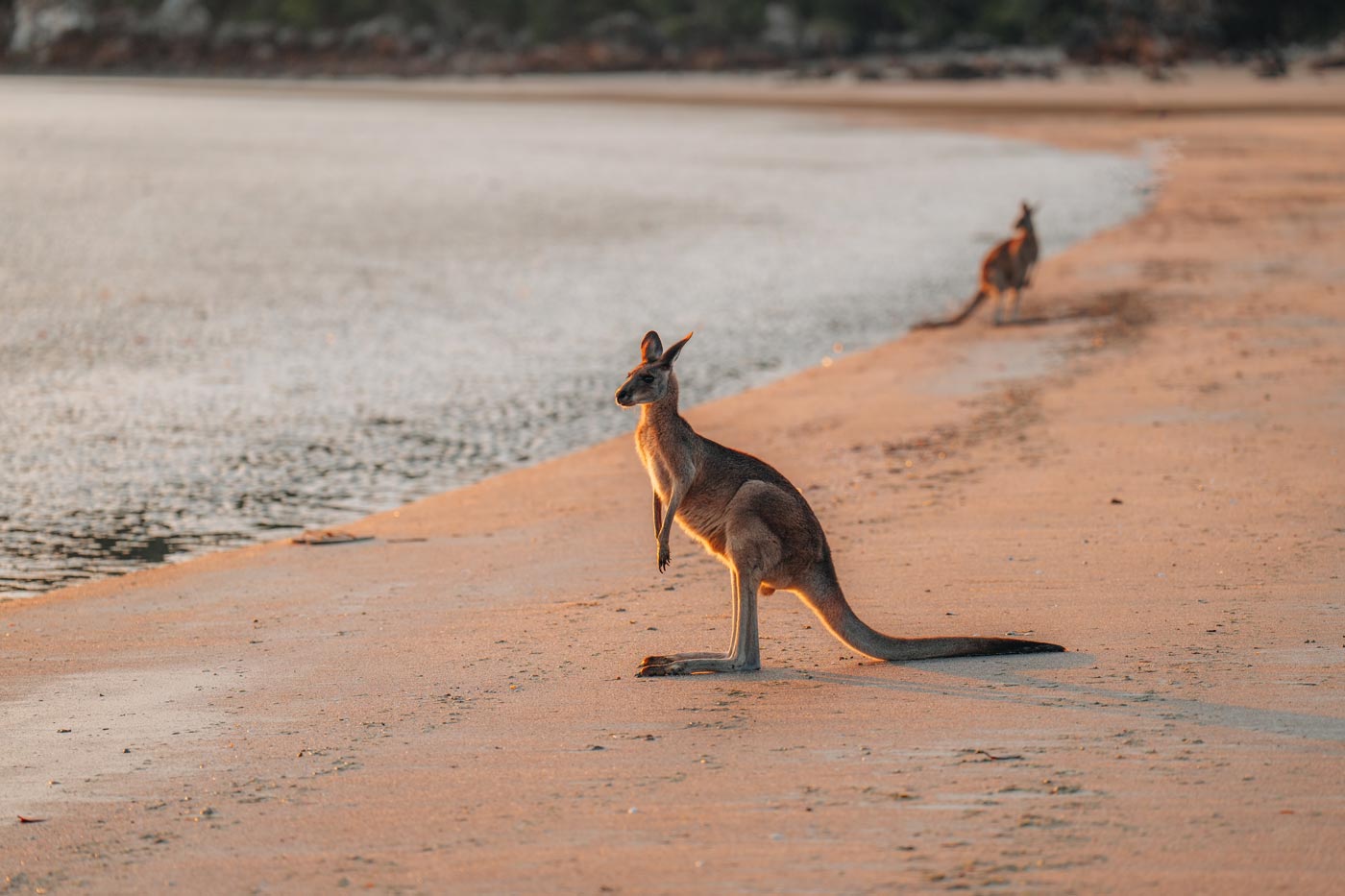
In the Mackay region, you can enjoy some truly unforgettable experiences, such as: feeding kangaroos at sunrise in Cape Hillsborough, spotting the peculiar platypuses in Broken River, or swimming in the deep canyons of Finch Hatton Gorge.
This region is home to Australia’s longest subtropical rainforest. Just imagine what that means!
Airlie Beach is a vibrant tourist town located between Mackay and Townsville, on the Whitsunday Coast. But it’s not famous for nothing, this is the perfect place to enjoy stunning beaches, sunshine, and breathtaking islands. Airlie Beach is also the gateway to the legendary Whitsunday Islands, where you can go snorkeling, kayaking, cruising, and much more.
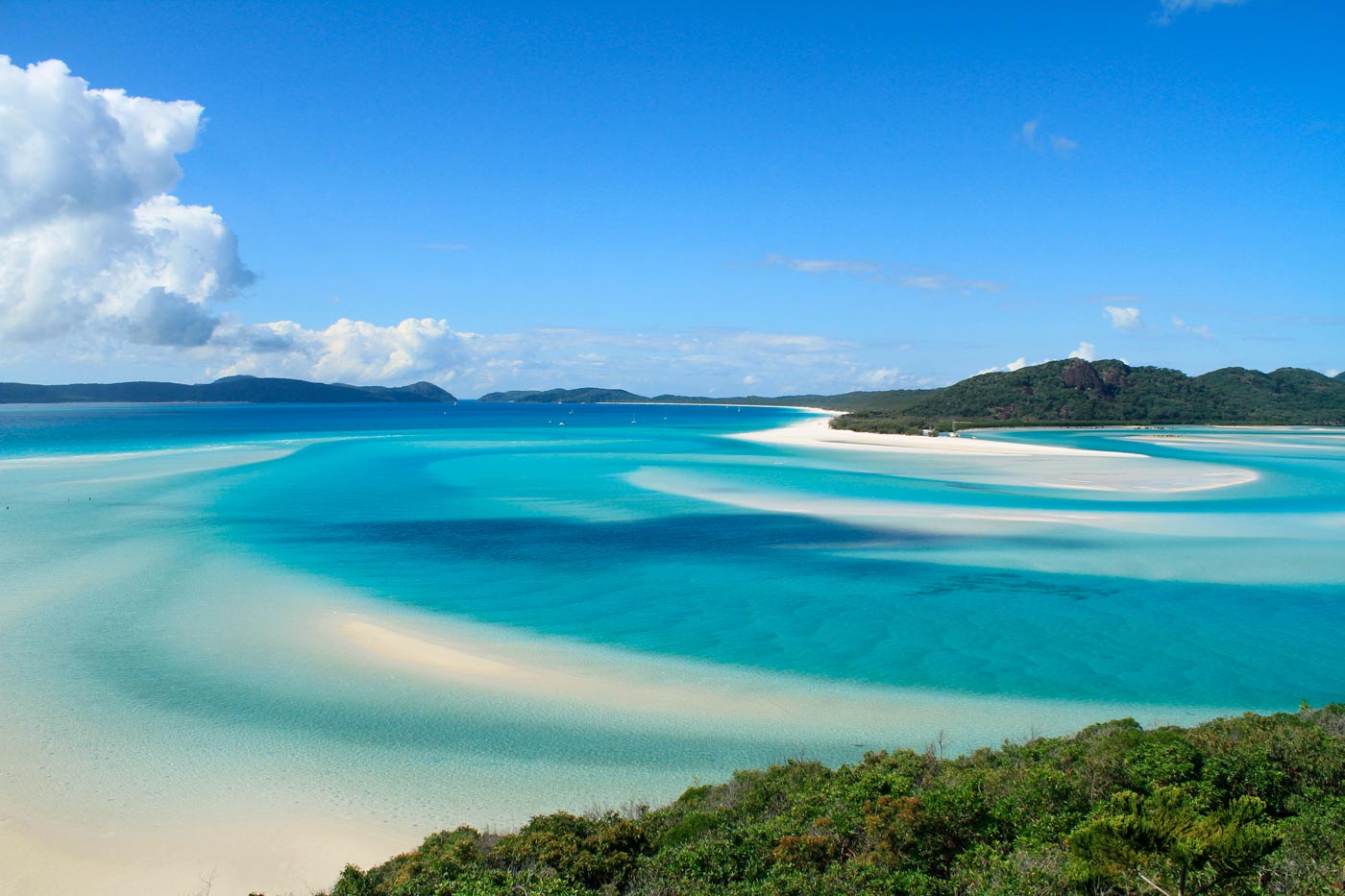
But there’s more! If you’re not a fan of boats, you can still enjoy incredible beaches in the neighboring town of Bowen. Bowen is actually one of the best places along the Queensland Pacific Coast Way to go snorkeling directly from the shore.
Unlike Mackay, Townsville won’t go unnoticed on your Queensland Pacific Coast Way adventure. This city is full of charm and exciting activities. Take a stroll through its lush parks. Visit the massive Reef HQ Aquarium. Enjoy the city’s nightlife with a few drinks.
If you haven’t had any luck spotting Australian wildlife, don’t worry! At Billabong Sanctuary, you can see koalas, crocodiles, and many other native animals. Just name it, and they’ll have it!
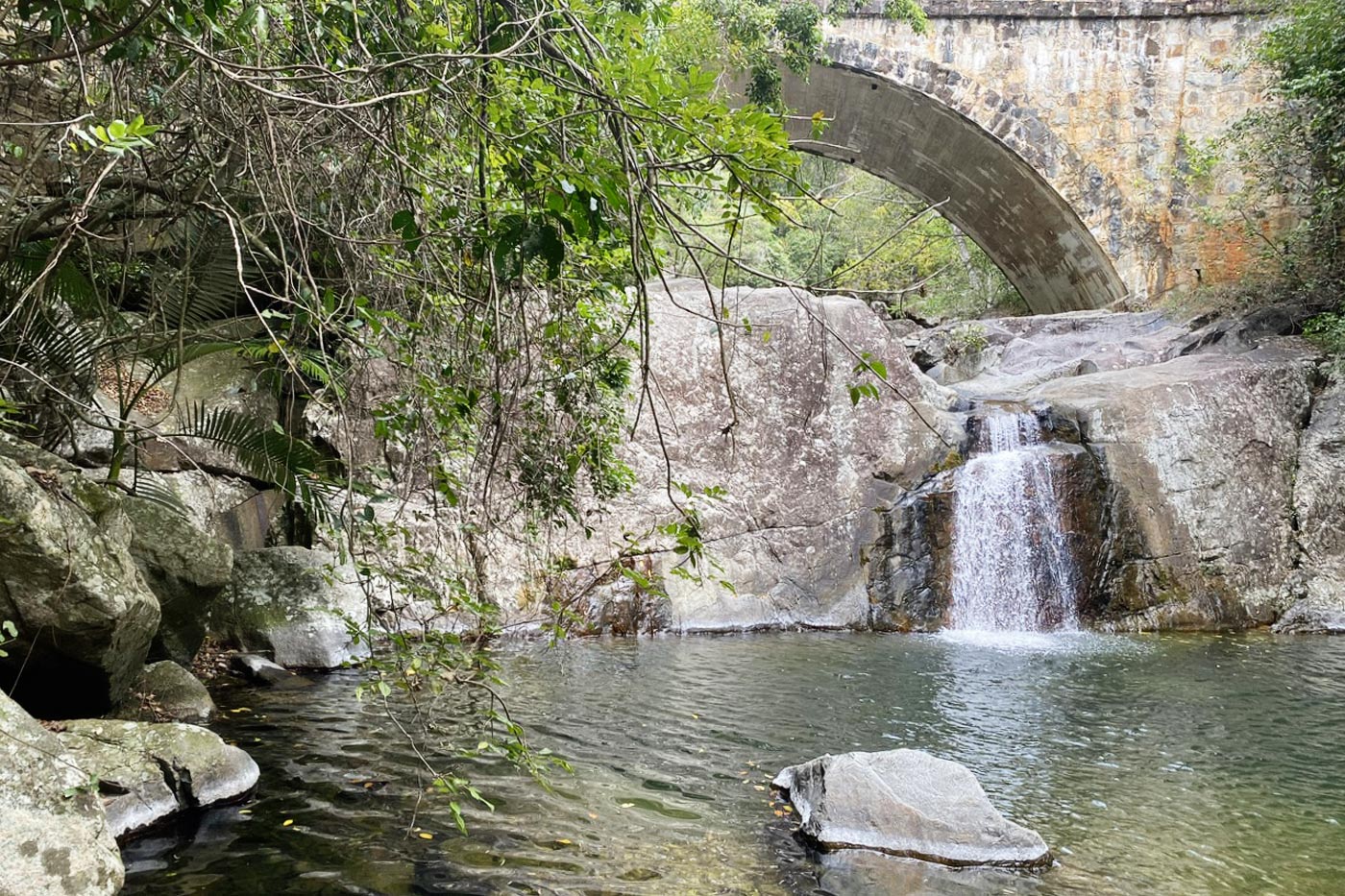
But Townsville isn’t just about urban experiences! Nearby, you can: visit Australia’s first underwater museum, watch a stunning sunset from Castle Hill, or explore the streams and waterfalls of Paluma Range National Park.
Mission Beach is a laid-back coastal town on the Cassowary Coast, where you can actually spot the giant cassowary birds. The town stretches across 14 kilometers of golden sand, perfect for swimming, surfing, or exploring the Kennedy Track.
Just across from the beach begins the Wet Tropics of Queensland, a UNESCO World Heritage Site.
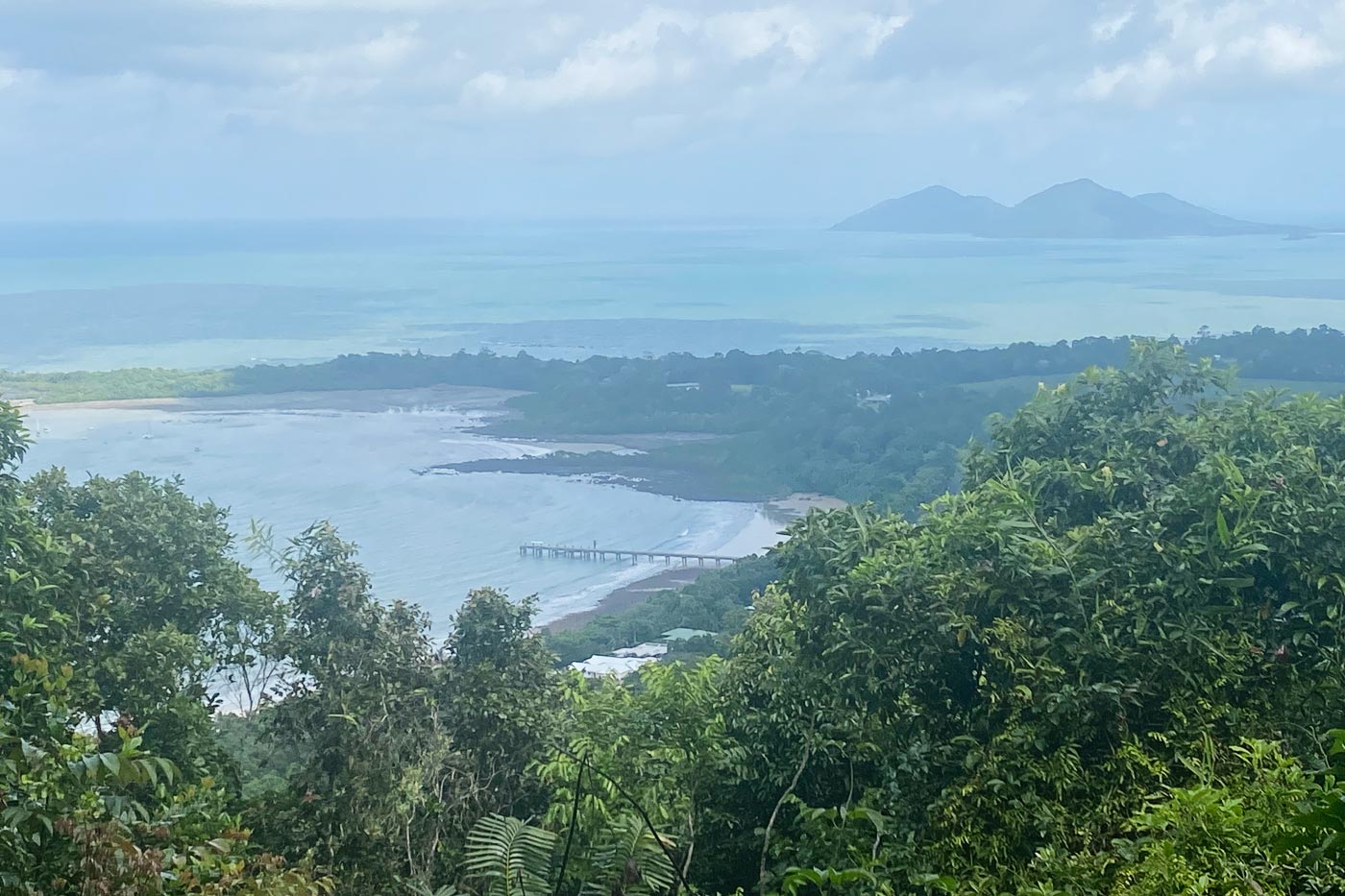
For adrenaline seekers, skydiving over Mission Beach with a beach landing or, if you prefer the ocean, diving in the Great Barrier Reef is an absolute must. So yes, small towns can definitely have big adventures.
Cairns marks the final stop on the Queensland Pacific Coast Way and serves as the gateway to the Great Barrier Reef. This coastal city is packed with outdoor adventures. Affordable and easy access to diving excursions. Swim in natural turquoise pools like the Babinda Boulders. Explore the many national parks surrounding Cairns.
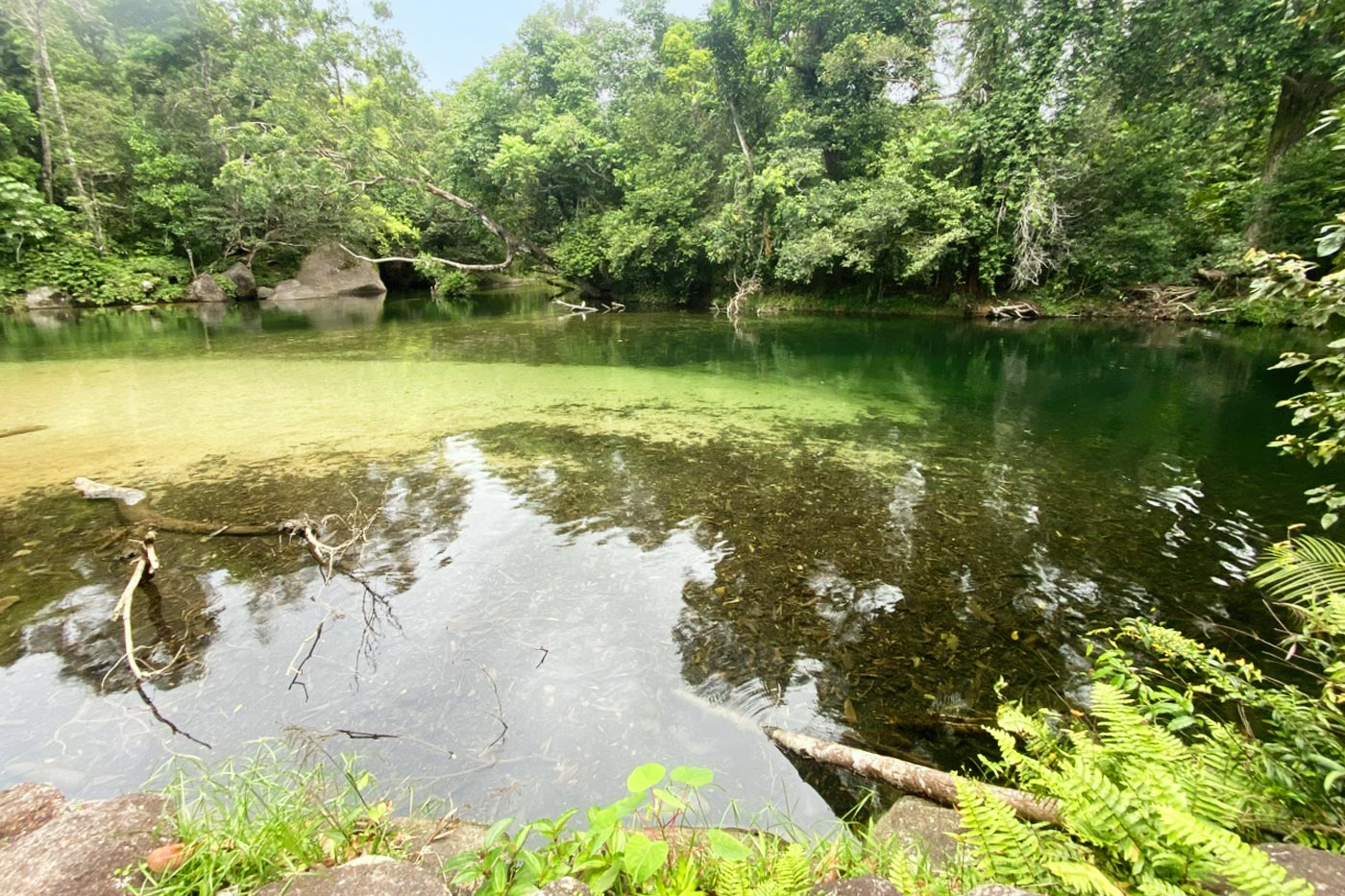
But Cairns is also the only place in the world where two World Heritage Sites come together: the Wet Tropics of Queensland and the Great Barrier Reef. A true natural wonder, perfect for immersing yourself in nature and discovering unparalleled landscapes.
Finally, from Cairns, you can embark on an epic journey through Port Douglas and Cape Tribulation, leading you to the oldest rainforest in the world.
By now, after getting a glimpse of everything the east coast of Queensland has to offer, you’re probably wondering: how do you travel its nearly 2,000 km? Well, there are different ways to explore the Queensland Pacific Coast Way, the best and most versatile option is by car or campervan.
Whether you buy or rent a car, traveling with a private vehicle is the most convenient option. This was our choice when exploring the Queensland Pacific Coast Way. Traveling by private vehicle gives you the advantage of going at your own pace, visiting exactly what you want, and accessing places that public transport simply cannot reach.
So, broadly speaking, choosing between a motorhome or a rental car comes down to personal preference. Motorhomes are more expensive, but they allow you to save on accommodation, cook your own meals, and provide more space. Cars are cheaper, more versatile, and easier to park, but sleeping in them is uncomfortable, and you’ll have to find hotels or other accommodation. Cooking will also depend on your camping setup.
Another fantastic option, and the one we personally chose, is to rent a 4×4 vehicle with a rooftop tent (RTT). This option combines the advantages of a motorhome (since you have a place to sleep) with the versatility of a car. The cost falls somewhere between a car and a motorhome.
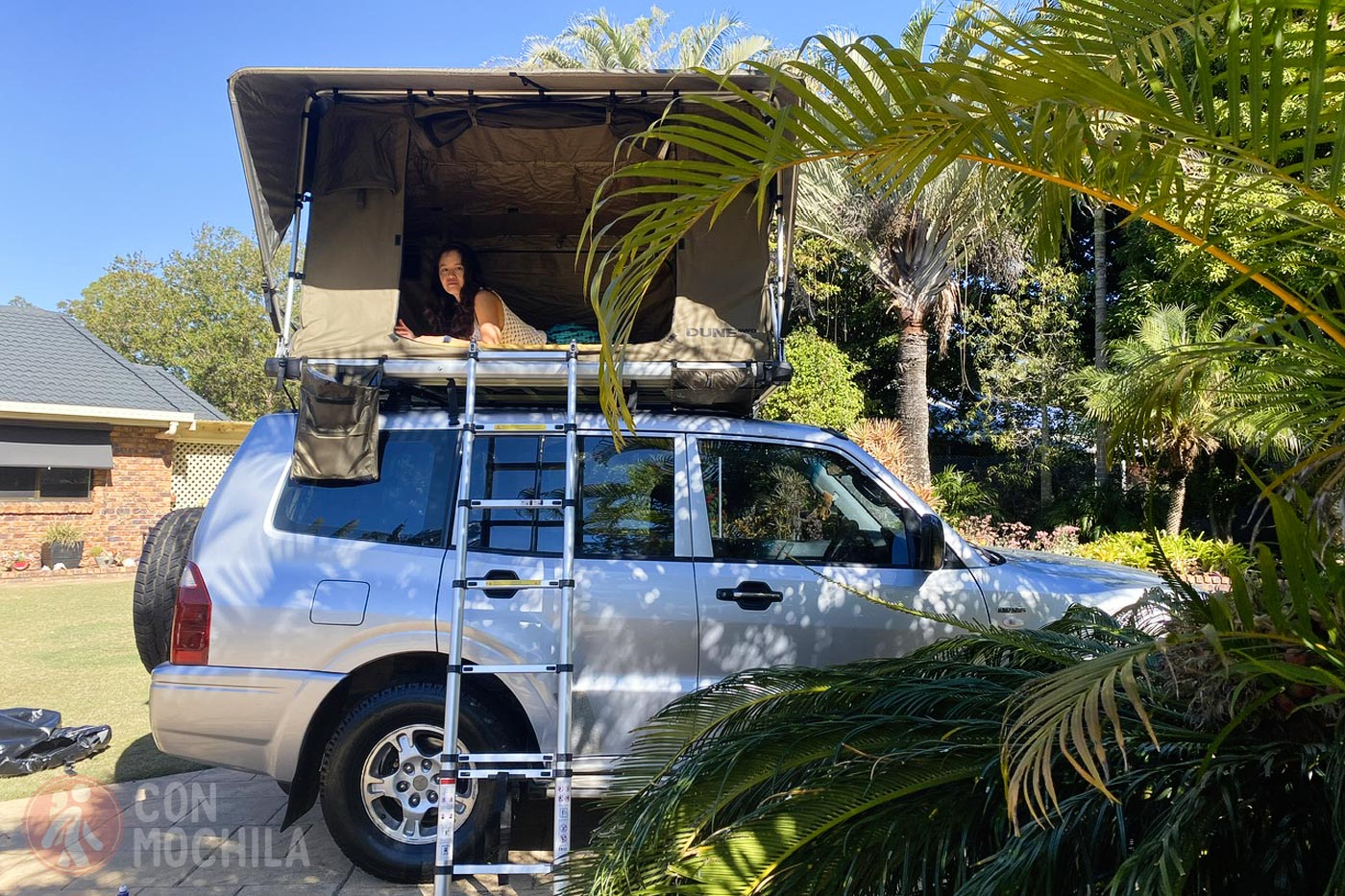
If you want to learn more about the best way to get around the Queensland Pacific Coast Way, check out our upcoming articles:
Another viable option for those who don’t want or can’t drive in Australia is taking the bus. The best bus company for this route is Greyhound Bus, which offers multi-day passes, making travel along the east coast of Queensland more affordable. Below is a table with prices:
| 7 days | $265 AUD |
| 15 days | $339 AUD |
| 30 days | $415 AUD |
| 60 days | $529 AUD |
| 90 days | $665 AUD |
| 120 days | $789 AUD |
While the bus is an affordable way to travel the Queensland Pacific Coast Way, it does come with some drawbacks. Limited destinations: The bus route connects the major towns and cities but does not reach places like Magnetic Island or remote national parks. To visit these, you’ll need to book tours or pay for taxis.
Additional costs: Without a car, you’ll have to eat out at restaurants and book accommodation in hotels or hostels, which can increase expenses.
While both trains and planes are technically options for traveling the Queensland Pacific Coast Way, they aren’t recommended. Trains only serve limited sections of the east coast, and there are no rail lines that connect most of the major attractions along the route.
Flights don’t make much sense unless you only want to visit a few specific places, such as Townsville or Mackay. I’d only recommend flying if you’re short on time and planning to stay in just one location for a couple of days. Otherwise, it’s just too much hassle moving from one flight to another.
Sorry for being blunt, but we prefer to be honest from the start.
Click on the image and it will take you to a new Google Maps window with all the points of interest to travel to Queensland Pacific Coast Way.
As we mentioned at the beginning of this guide, you can complete the Queensland Pacific Coast Way in less than 8 days, or you can spend months stopping at all the incredible places along the way.
Our recommendation? Spend at least two weeks exploring the Queensland Pacific Coast Way. This is the minimum amount of time needed to see the essential highlights and at least justify the huge expense of traveling to Australia. During these two weeks, make sure you don’t miss the following places:
If you ask us about our favorite place on the entire Queensland Pacific Coast Way, Thea would say Keppel Island because that’s where she fulfilled her dream of swimming in the Great Barrier Reef for the first time.
On the other hand, my personal favorite is Babinda Boulders. In its crystal-clear waters, I had the incredible experience of swimming just one meter away from a platypus!
First things first: Australia is expensive. Very expensive. That said, your final budget for the Queensland Pacific Coast Way will depend largely on the type of transportation you choose, the number of days you stay, and how you manage your meals.
The following prices are only estimates:
Additional costs: Ferries to the islands, guided tours, and other experiences along the Queensland Pacific Coast Way.
Taking all the above into account, the estimated budget for a two-week trip could be around $3,000 AUD (not including flights to Australia), assuming you rent a motorhome and stay at campsites.
If you want to make the most of your trip along the Queensland Pacific Coast Way, be sure to download these apps:
Finding accommodation in any country is easier than ever. Apps like Booking and Agoda let you search for hotels and hostels wherever you are. Another very useful tool is Airbnb, which often offers cheaper accommodation options than the previous two, providing stays in private apartments or houses.
A trending app among young travelers in Australia is Hostelworld. This platform helps you find hostels with a lively, social atmosphere—perfect if you’re traveling alone and want to meet like-minded people.
For those traveling by motorhome or car, WikiCamps is an essential app for finding campsites or holiday parks along the Queensland Pacific Coast Way. You can check prices, contact owners, and read reviews from other travelers.
To wrap up this guide to the Queensland Pacific Coast Way, here are some recommendations and common-sense tips to help you enjoy Queensland’s east coast while staying safe. Be sure to check out the post “What to Do and Not to Do in Australia” for more insights.